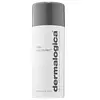What's inside
What's inside
 Key Ingredients
Key Ingredients

 Benefits
Benefits

 Concerns
Concerns

 Ingredients Side-by-side
Ingredients Side-by-side

Microcrystalline Cellulose
AbsorbentMagnesium Oxide
AbsorbentSodium Cocoyl Isethionate
CleansingColloidal Oatmeal
AbsorbentDisodium Lauryl Sulfosuccinate
CleansingSodium Lauroyl Glutamate
Oryza Sativa Bran Extract
Skin ConditioningOryza Sativa Starch
AbsorbentHydrogenated Coconut Acid
EmollientAllantoin
Skin ConditioningPapain
Skin ConditioningSalicylic Acid
MaskingGinkgo Biloba Leaf Extract
Skin ConditioningCamellia Sinensis Leaf Extract
AntimicrobialGlycyrrhiza Glabra Root Extract
BleachingPCA
HumectantPopulus Tremuloides Bark Extract
AntiseborrhoeicCyclodextrin
AbsorbentSodium Isethionate
CleansingLauryl Methacrylate
Maltodextrin
AbsorbentMelaleuca Alternifolia Leaf Oil
AntioxidantCitrus Paradisi Peel Oil
MaskingSodium Dehydroacetate
PreservativeHydrolyzed Corn Starch Hydroxyethyl Ether
Emulsion StabilisingWater
Skin ConditioningLimonene
PerfumingCitric Acid
BufferingMicrocrystalline Cellulose, Magnesium Oxide, Sodium Cocoyl Isethionate, Colloidal Oatmeal, Disodium Lauryl Sulfosuccinate, Sodium Lauroyl Glutamate, Oryza Sativa Bran Extract, Oryza Sativa Starch, Hydrogenated Coconut Acid, Allantoin, Papain, Salicylic Acid, Ginkgo Biloba Leaf Extract, Camellia Sinensis Leaf Extract, Glycyrrhiza Glabra Root Extract, PCA, Populus Tremuloides Bark Extract, Cyclodextrin, Sodium Isethionate, Lauryl Methacrylate, Maltodextrin, Melaleuca Alternifolia Leaf Oil, Citrus Paradisi Peel Oil, Sodium Dehydroacetate, Hydrolyzed Corn Starch Hydroxyethyl Ether, Water, Limonene, Citric Acid
Water
Skin ConditioningGlycerin
HumectantGlycolic Acid
BufferingSucrose
HumectantHydrated Silica
AbrasivePolyglyceryl-10 Dipalmitate
EmollientPropanediol
SolventLactic Acid
BufferingSodium Cocoyl Isethionate
CleansingPolyacrylate Crosspolymer-6
Emulsion StabilisingSodium Hydroxide
BufferingSodium Lactate
BufferingAcrylamide/Sodium Acryloyldimethyltaurate Copolymer
Emulsion StabilisingCitrus Limon Peel Powder
AbsorbentCitrus Limon Fruit Extract
MaskingOcimum Sanctum Leaf Extract
Skin ConditioningChamomilla Recutita Flower Extract
MaskingGlycyrrhiza Glabra Root Extract
BleachingSaccharum Officinarum Extract
MoisturisingCitrus Aurantifolia Peel Extract
CleansingSantalum Album Extract
CleansingCitrus Limon Peel Oil
MaskingCitrus Aurantium Bergamia Peel Oil
Leuconostoc/Radish Root Ferment Filtrate
AntimicrobialCoconut Acid
CleansingSodium Riboflavin Phosphate
Skin ConditioningDimethylhydroxy Furanone
MaskingIsohexadecane
EmollientPolysorbate 80
EmulsifyingSodium Isethionate
CleansingSorbitan Oleate
EmulsifyingTriethyl Citrate
MaskingVanillin
MaskingPentaerythrityl Tetra-Di-T-Butyl Hydroxyhydrocinnamate
AntioxidantCaprylyl Glycol
EmollientPhenoxyethanol
PreservativeLimonene
PerfumingLinalool
PerfumingCitral
PerfumingWater, Glycerin, Glycolic Acid, Sucrose, Hydrated Silica, Polyglyceryl-10 Dipalmitate, Propanediol, Lactic Acid, Sodium Cocoyl Isethionate, Polyacrylate Crosspolymer-6, Sodium Hydroxide, Sodium Lactate, Acrylamide/Sodium Acryloyldimethyltaurate Copolymer, Citrus Limon Peel Powder, Citrus Limon Fruit Extract, Ocimum Sanctum Leaf Extract, Chamomilla Recutita Flower Extract, Glycyrrhiza Glabra Root Extract, Saccharum Officinarum Extract, Citrus Aurantifolia Peel Extract, Santalum Album Extract, Citrus Limon Peel Oil, Citrus Aurantium Bergamia Peel Oil, Leuconostoc/Radish Root Ferment Filtrate, Coconut Acid, Sodium Riboflavin Phosphate, Dimethylhydroxy Furanone, Isohexadecane, Polysorbate 80, Sodium Isethionate, Sorbitan Oleate, Triethyl Citrate, Vanillin, Pentaerythrityl Tetra-Di-T-Butyl Hydroxyhydrocinnamate, Caprylyl Glycol, Phenoxyethanol, Limonene, Linalool, Citral
 Reviews
Reviews

Ingredients Explained
These ingredients are found in both products.
Ingredients higher up in an ingredient list are typically present in a larger amount.
Glycyrrhiza Glabra Root Extract is an extract of the roots of Licorice. It has been found to have several benefits such as skin hydrating, conditioning, and soothing.
One component, glabridin, has extra potent antioxidant and soothing properties. It has also been found to block pigmentation from UVB rays in guinea pigs.
Licorice Root also contains a flavonoid. Flavonoids are a natural substance from in plants. Flavonoids also have antioxidant properties.
Another component, glycyrrhizin, has been found to have anti-inflammatory and antimicrobial benefits. This may make licorice root extract effective at treating acne. However, more research is needed to support this.
Liquiritin is one of the flavone compounds found in licorice. It has been found to help lighten skin by preventing tyrosinase from reacting with tyrosine. When the two react, protein is converted to melanin. Melanin is the substance in your body that gives your features pigmentation.
Learn more about Glycyrrhiza Glabra Root ExtractLimonene is a fragrance that adds scent and taste to a formulation.
It's found in the peel oil of citrus fruits and other plants such as lavender and eucalyptus. The scent of limonene is generally described as "sweet citrus".
Limonene acts as an antioxidant, meaning it helps neutralize free radicals.
When exposed to air, oxidized limonene may sensitize the skin. Because of this, limonene is often avoided by people with sensitive skin.
The term 'fragrance' is not regulated in many countries. In many cases, it is up to the brand to define this term. For instance, many brands choose to label themselves as "fragrance-free" because they are not using synthetic fragrances. However, their products may still contain ingredients such as essential oils that are considered a fragrance.
Learn more about LimoneneSodium cocoyl isethionate is a natural ingredient from coconut oil. It is an ultra gentle cleanser that gives a nice foam without drying the skin or impacting the skin barrier.
The amount of foam created depends on the amount of sodium cocoyl isethionate used in the product.
This ingredient also helps improve the spreadability of a product.
Learn more about Sodium Cocoyl IsethionateWe don't have a description for Sodium Isethionate yet.
Water. It's the most common cosmetic ingredient of all. You'll usually see it at the top of ingredient lists, meaning that it makes up the largest part of the product.
So why is it so popular? Water most often acts as a solvent - this means that it helps dissolve other ingredients into the formulation.
You'll also recognize water as that liquid we all need to stay alive. If you see this, drink a glass of water. Stay hydrated!
Learn more about Water